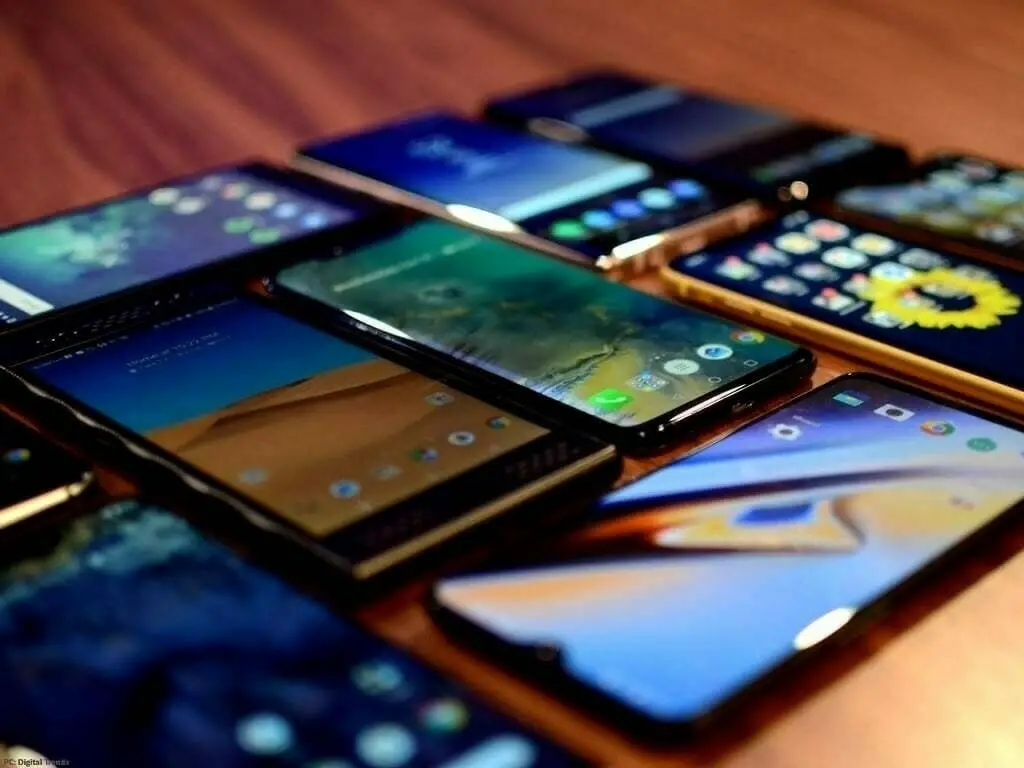Another scenario is proprietary operating systems built by companies that don’t manufacture devices but license their operating systems to manufacturers to run on them. The biggest examples are Windows Mobile and Windows Phone 7, built by Microsoft and running on smartphones by HTC, Samsung, Dell and LG among others. These operating systems usually have a consistent appearance and behavior across all devices, as Windows 7 appears and behaves the same regardless of what brand of device you’re running it on. Let’s look at these operating systems in detail.
1. Microsoft Windows Mobile
You might be wondering what this now-obsessed operating system is doing in an article on modern mobile operating systems. However, no discussion on mobile operating systems can be complete without a mention of Windows Mobile. Back when PalmOS devices had a grid of icons offering only the most basic built-in apps, Blackberry OS and Symbian devices didn’t even have touch screens. And before iOS was even around, Windows Mobile devices did almost everything modern smartphone operating systems do, and then some. Windows Mobile devices were called Pocket PCs and were true to their name! The operating system featured true multitasking, installation of applications using CAB files, full file system access, registry access, options to replace the entire user interface with another, integrated data tethering support, personal information synchronization, and a full office suite.
The platform enjoyed a loyal following among enthusiasts and lead to the creation of the famous XDA-Developers community, where developers and power users from all over the world gathered to share their customizations and hacks for Windows Mobile devices. Later, this community expanded to Android devices and is the largest smartphone customization community online today. Installing a heavily customized version of Windows Mobile into the device was as simple as connecting it to a computer via USB and running a standard software installation wizard on the computer, no ridiculous jail breaking/rooting/recovery/command line usage required. The primary reasons behind the downfall of Windows Mobile were Microsoft’s inability to reach the masses, little-to-no focus from Microsoft on developing an app ecosystem that would encourage developers to create apps for the platform, and the popularity gained by Apple’s iPhone, which Windows Mobile could not compete with due to an interface that required finger-sensing. In 2010, Microsoft decided to drop Windows Mobile completely in favor of Windows Phone 7. It’s legacy lives on, however. HTC Sense – hugely popular on Android – was initially created for Windows Mobile devices. Also, Android’s default interface features multiple home screens, home screen previews, and widgets on each screen, which derives heavily from the interface of SPB Mobile Shell – a third party Windows Mobile interface that innovatively introduced users to this concept.
2. Microsoft Windows Phone 7
Windows Phone 7 was Microsoft’s answer to the world of rich smartphones. Windows Mobile abandoned, Microsoft built Windows Phone 7 from scratch, and presented users with an interface like no other. Given the name Metro, this user interface takes a break from the traditional icon grid used by most competitors and brought the concept of live tiles to the home screen, focusing heavily on the presentation of information to users in a fluid, unobtrusive manner. The result looked impressive, to say the least. However, many signature features of Windows Mobile such as true multitasking, app side loading, etc. were dropped, drawing heavy criticism from loyal Windows Mobile users. Though Windows Phone 7 has not gained a major market share so far, things look very promising as Microsoft has announced a major update for fall 2011, which brings true multitasking and many other important features to the platform in a few months. Development is also underway on bringing app side loading. Furthermore, Microsoft is focusing heavily on the app ecosystem in collaborating with developers and the Windows Live Marketplace has become the fastest growing app market today. Furthermore, Nokia has decided to switch from Symbian/Meego to Windows Phone 7 as its smartphone platform, and this alone promises to increase the market share of this operating system to a significant extent worldwide.
Currently, there are over a dozen Windows Phone 7 devices available in the market, manufactured by manufacturers such as HTC, Samsung, Dell and LG. Several other manufacturers, including Nokia, have also decided to join in, and several new Windows Phone 7 devices are expected to be released this year.
Read Also:
- History Of Cell Phones
- Effect Of Mobile Phone Use On Some Health Aspects Of Children And Adolescents
- The Collapse Of Nokia Company Mobile Phones
- Introduction About Apple iPhone 16 Pro
- Apple’s First Foldable iPhone Could Cost As High As $2500
- Apple Foldable iPhone Plans: Everything We Know So Far On Whether The Rumours Are True Or Not
- Best Mobile Phones Under Rs 15,000 In 2025: POCO M7 PRO 5G, CMF Phone 1 And More
- Contextual Effects Of Cell Phones Use On Students
- DNA Integrity Problem By Mobile Cellular Phones
- Mobile Phone Use and Male Infertility
- Effect Of Electromagnetic Waves Emitted From Mobile Phones On Male Fertility






